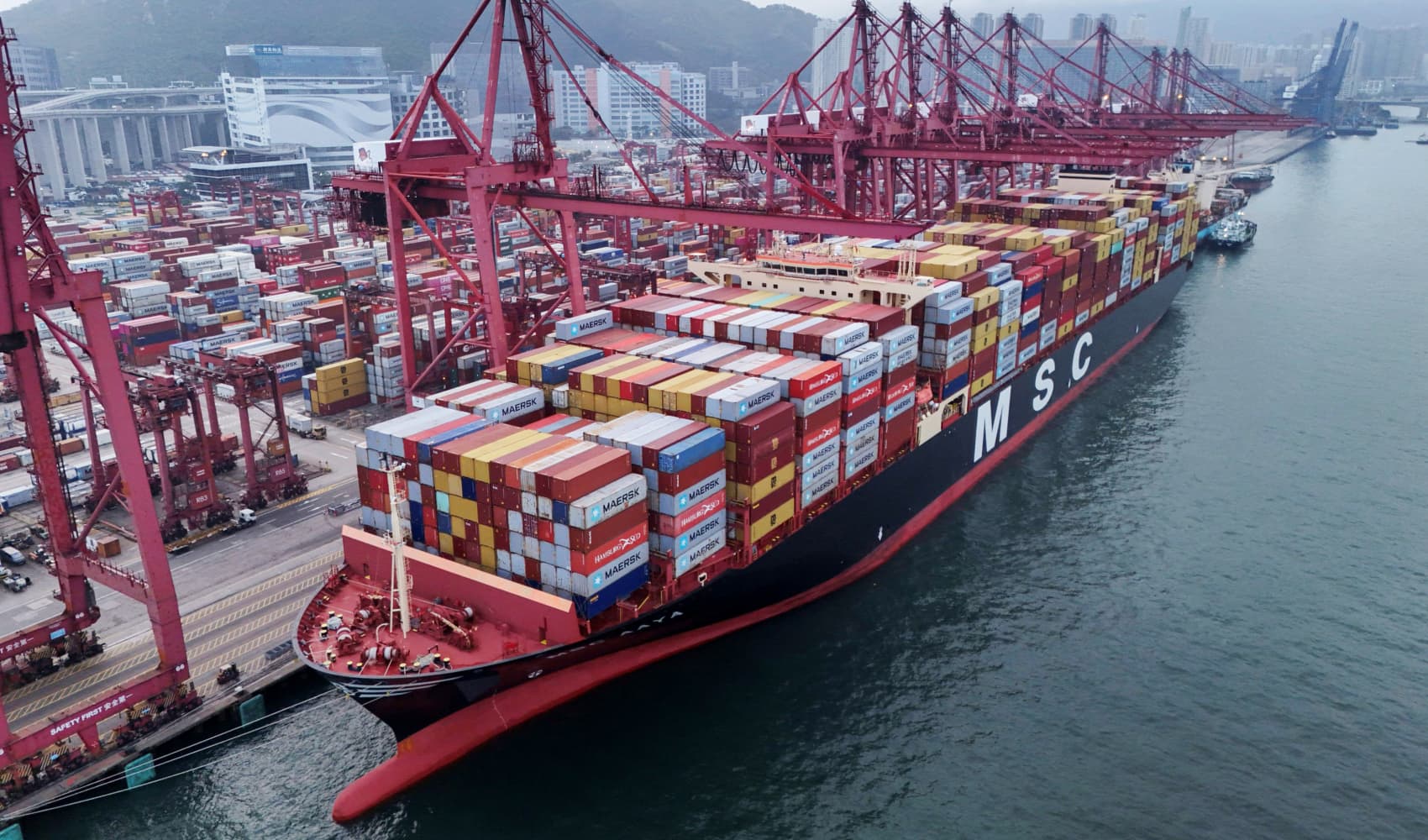US-China Trade War: How Latin America Can Win Big
Latin America's Golden Opportunity: Navigating the US-China Trade Winds
Introduction: A Rising Tide?
The world stage is often a tumultuous place, isn't it? International trade wars, shifting alliances, and economic uncertainties – it's enough to make anyone's head spin. But within every challenge lies opportunity, and according to Marcos Galperin, CEO of MercadoLibre (the "Amazon of Latin America"), the US-China trade war could be just the thing Latin America needs to boost its economy. But is this just wishful thinking, or is there real potential for growth?
Who is Marcos Galperin? The Voice of Latin American E-Commerce
Before diving into the nitty-gritty, let’s meet the man behind this bold statement. Marcos Galperin isn’t just any CEO; he’s Argentina’s richest person, with an estimated net worth of $8.7 billion, according to Forbes. He’s the founder and driving force behind MercadoLibre, the undisputed e-commerce giant of Latin America. When Galperin speaks, the business world listens. His insights into the Latin American market are invaluable.
The US-China Trade War: A Primer
What exactly is this trade war everyone’s talking about? In simple terms, it's an economic dispute between the United States and China characterized by escalating tariffs and trade restrictions. Think of it like a playground squabble between two superpowers, with the rest of the world watching (and sometimes getting caught in the crossfire).
Understanding the Impact of Tariffs
Tariffs, essentially taxes on imported goods, are the main weapon in this trade war. These tariffs increase the cost of goods being traded between the US and China. This makes goods from other countries more competitive.
Galperin's Bold Prediction: Opportunity Knocks
So, how does Galperin see this affecting Latin America? He believes that "if Latin America plays its cards well," the region can significantly benefit from the resulting volatility. He predicts a "permanent shift" in US-China trade relations. This shift could open doors for Latin American businesses to fill the gaps left by US and Chinese companies.
Latin America's Strengths: What Does the Region Offer?
What makes Latin America uniquely positioned to capitalize on this opportunity? The region boasts a wealth of natural resources, a growing middle class, and a burgeoning tech scene. Think about the raw materials, agricultural products, and manufacturing capabilities that Latin America offers.
Natural Resources and Agriculture
From copper in Chile to soybeans in Argentina and coffee in Colombia, Latin America is a treasure trove of resources that are in high demand globally. If US and Chinese suppliers become less competitive due to tariffs, Latin American producers can step in and fill the void.
A Burgeoning Tech Scene
Companies like MercadoLibre itself are proof that Latin America is a hotbed of innovation. With a young, tech-savvy population and increasing investment in startups, the region is poised to become a major player in the global tech landscape. This is especially relevant for things like nearshoring.
Playing the Cards Right: What Needs to Happen?
Galperin's statement comes with a crucial caveat: "if Latin America plays its cards well." So, what does that entail? It requires a strategic approach, focusing on key areas that can drive growth and competitiveness.
Investing in Infrastructure
Improved infrastructure, including roads, ports, and digital networks, is essential for facilitating trade and attracting foreign investment. Better infrastructure translates to lower transportation costs and more efficient supply chains.
Streamlining Regulations and Reducing Bureaucracy
Reducing red tape and simplifying business regulations can make it easier for companies to operate and compete in the global market. This is a huge hurdle for businesses in Latin America to operate.
Promoting Regional Integration
Strengthening trade ties within Latin America can create a larger, more unified market, boosting economic growth and resilience. Think of organizations like MERCOSUR being more effective.
Nearshoring: A Key Opportunity for Latin America
One of the most promising opportunities for Latin America is nearshoring – the relocation of business processes or production to nearby countries. With companies looking to diversify their supply chains and reduce reliance on China, Latin America becomes an attractive alternative for US businesses.
Advantages of Nearshoring to Latin America
Proximity to the US, lower labor costs compared to developed countries, and cultural similarities make Latin America an ideal nearshoring destination. Think about time zone alignment and ease of communication.
The Role of E-Commerce: MercadoLibre's Perspective
As the CEO of the region’s leading e-commerce platform, Galperin has a unique perspective on the potential of digital trade to drive economic growth. MercadoLibre is already connecting millions of buyers and sellers across Latin America, and it can play an even bigger role in facilitating international trade.
Challenges and Risks: It's Not All Smooth Sailing
Of course, it's not all sunshine and rainbows. Latin America faces significant challenges, including political instability, corruption, and income inequality. These issues can hinder economic growth and deter foreign investment.
Political Instability and Corruption
Political uncertainty and widespread corruption can create an unpredictable business environment, making it difficult for companies to plan and invest for the long term.
Income Inequality
The vast gap between rich and poor in Latin America can limit economic opportunities for a large segment of the population. Addressing income inequality is crucial for creating a more inclusive and sustainable economy.
Looking Ahead: A Call to Action
Galperin's message is a call to action for Latin American governments and businesses to seize this unique opportunity. By investing in infrastructure, streamlining regulations, and promoting regional integration, Latin America can position itself as a major player in the global economy. This will be a big win for everyone.
Conclusion: Latin America's Time to Shine?
The US-China trade war presents both challenges and opportunities for Latin America. Marcos Galperin believes that the region can benefit significantly if it plays its cards right. By leveraging its natural resources, growing tech scene, and proximity to the US, Latin America can attract investment, boost trade, and drive economic growth. The key lies in strategic planning, effective implementation, and a commitment to creating a more stable and business-friendly environment. Will Latin America rise to the occasion? Only time will tell, but the potential is certainly there. This is Latin America's moment.
Frequently Asked Questions
1. What exactly is MercadoLibre?
MercadoLibre is the leading e-commerce platform in Latin America, often referred to as the "Amazon of Latin America." It allows individuals and businesses to buy and sell products online, offering a wide range of goods and services.
2. How can the US-China trade war benefit Latin America?
The trade war creates an opportunity for Latin American countries to become alternative suppliers of goods and services to both the US and China. If goods from the US and China become more expensive due to tariffs, Latin American companies can offer competitive alternatives.
3. What are the main challenges that Latin America needs to overcome to capitalize on this opportunity?
Latin America needs to address challenges such as political instability, corruption, inadequate infrastructure, and complex regulations to attract foreign investment and promote economic growth.
4. What is nearshoring, and why is it important for Latin America?
Nearshoring is the practice of relocating business processes or production to nearby countries. It's important for Latin America because its proximity to the US, lower labor costs, and cultural similarities make it an attractive alternative to China for US companies seeking to diversify their supply chains.
5. What role does technology and e-commerce play in Latin America's potential growth?
Technology and e-commerce can connect Latin American businesses with global markets, facilitate trade, and drive innovation. Companies like MercadoLibre are playing a crucial role in creating a more connected and dynamic economy in the region.

